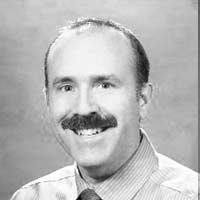Enhancing Clinic Efficiency with Anatomy-Based Fitting and ESRT: A Q&A with Experts
AudiologyOnline: What concerns do audiologists have about using ESRT in cochlear implant fittings?

Cache Pitt, AuD: Many audiologists worry that incorporating ESRT might lengthen the fitting process or complicate their workflow due to the simultaneous management of the immittance bridge and programming computer. There is also apprehension about the potential increase in complexity and time required.
AudiologyOnline: How has your experience with ESRT addressed these concerns?
Cache Pitt, AuD: Contrary to these concerns, my experience shows that ESRT actually enhances efficiency. It offers an objective target, much like speech mapping for hearing aids, which simplifies achieving optimal patient outcomes. Once you overcome the initial learning curve, ESRT often allows you to complete fittings faster than relying on subjective patient feedback, ultimately saving time.
AudiologyOnline: How long does it typically take to perform ESRT for bilateral MED-EL cochlear implant patients?
Cache Pitt, AuD: For bilateral MED-EL patients, I usually allocate one hour for the session. This timeframe covers completing ESRT for both ears, conducting aided pure tone testing, and performing speech discrimination assessments. With practice, ESRT can be efficiently executed within 10-15 minutes per ear.
AudiologyOnline: What strategies can help when first starting to use ESRT?
Cache Pitt, AuD: If you're new to ESRT, it’s beneficial to have a MED-EL representative, a fellow audiologist, or a student assist you during the initial attempts. This support can help ease the transition. Additionally, utilizing instructional videos or guides can be very helpful in becoming familiar with the process.
AudiologyOnline: Can ESRT be performed with different immittance bridges?
Cache Pitt, AuD: Yes, ESRT is adaptable to various immittance bridges. While I use the GSI TympStar Pro in my clinic, ESRT is not limited to this specific equipment. The key is to be familiar with the equipment you have and adjust the ESRT process accordingly.
AudiologyOnline: What are some practical tips for using ESRT effectively?
Cache Pitt, AuD:
- Use the default 226 Hz probe tone for ESRT, switching to 1000 Hz only if necessary.
- Record essential details of the ESRT process (such as probe tip size, ear used, and probe tone frequency) in your chart notes or in MAESTRO for future reference.
- Enhance probe stability by using ear impression material to keep the probe tip securely in place.
AudiologyOnline: How does ESRT impact patient follow-up and clinical scheduling?
Cache Pitt, AuD: ESRT improves clinical efficiency by reducing the need for multiple follow-up appointments. By achieving accurate target settings more quickly, you can spend more time on patient counseling and less on additional programming. This leads to better patient outcomes and increased satisfaction.
AudiologyOnline: What is Anatomy-Based Fitting, and how does it differ from ESRT?
Cache Pitt, AuD: Anatomy-Based Fitting involves using post-operative CT scans to precisely determine the location of cochlear implant electrodes within the cochlea. This data is then used to align frequency settings with the electrode positions, optimizing pitch perception. This method complements ESRT, which focuses on setting appropriate loudness levels.
AudiologyOnline: How has Anatomy-Based Fitting influenced your clinical practice?
Cache Pitt, AuD: Anatomy-Based Fitting has greatly streamlined my clinical workflow. By integrating post-operative CT data, I can achieve more precise pitch perception settings. This approach has been especially useful for challenging cases and has improved overall patient outcomes.
AudiologyOnline: What recommendations do you have for clinicians new to Anatomy-Based Fitting?
Cache Pitt, AuD: I recommend starting to incorporate Anatomy-Based Fitting into your practice as soon as possible to gain experience. Work closely with your surgical team to obtain post-operative CT scans and use tools like MED-EL’s OTOPLAN software (or OTOPLAN on Demand) to facilitate the process. Over time, this method will become a valuable component of your fitting protocol.
By leveraging objective measures like ESRT and Anatomy-Based Fitting, audiologists can enhance their clinical efficiency, reduce the need for follow-ups, and improve patient satisfaction. Integrating these approaches into your practice can lead to more precise fittings and better patient outcomes.
To listen to the full discussion, and even earn CEUs, visit: https://www.audiologyonline.com/audiology-ceus/medel/


